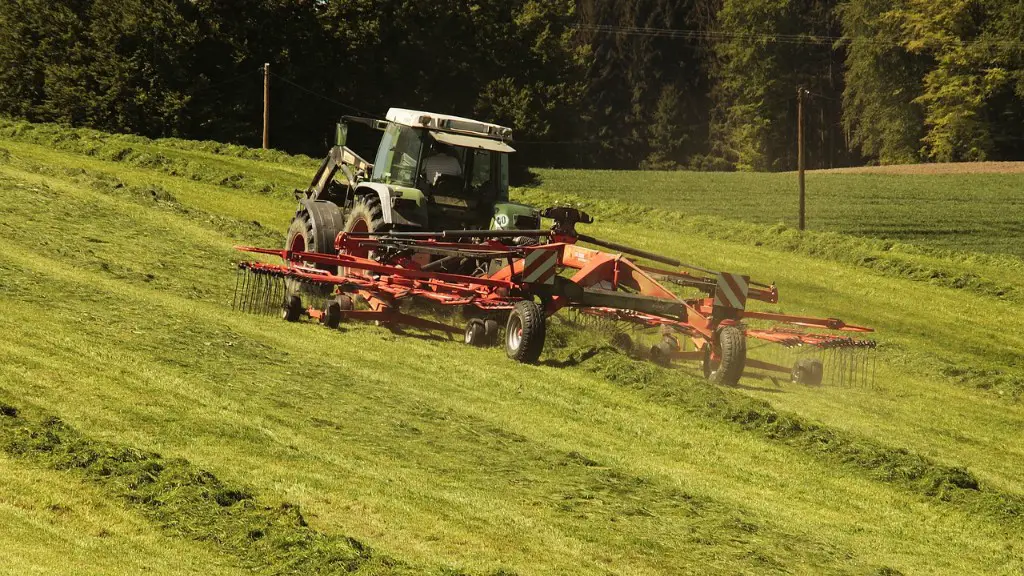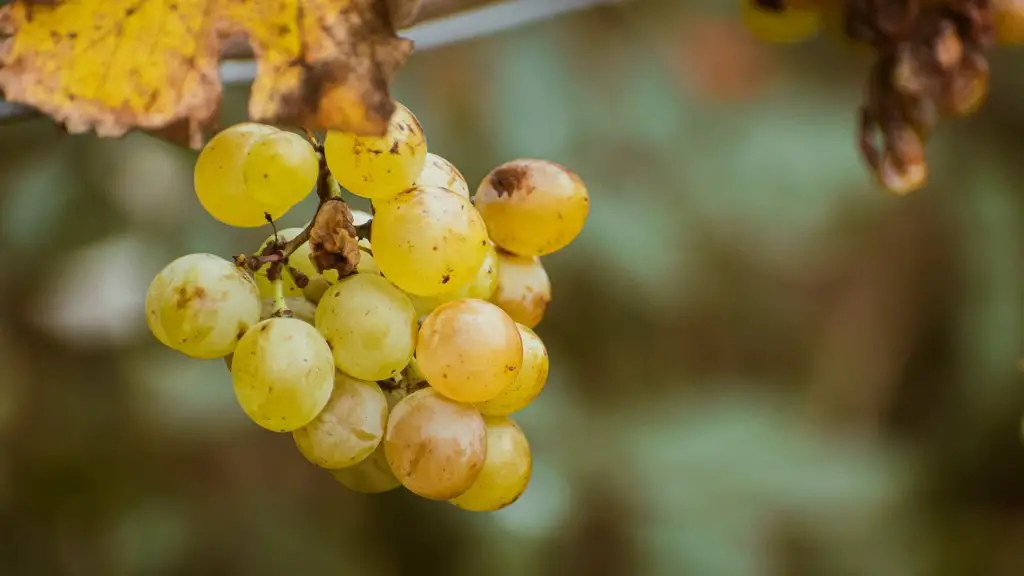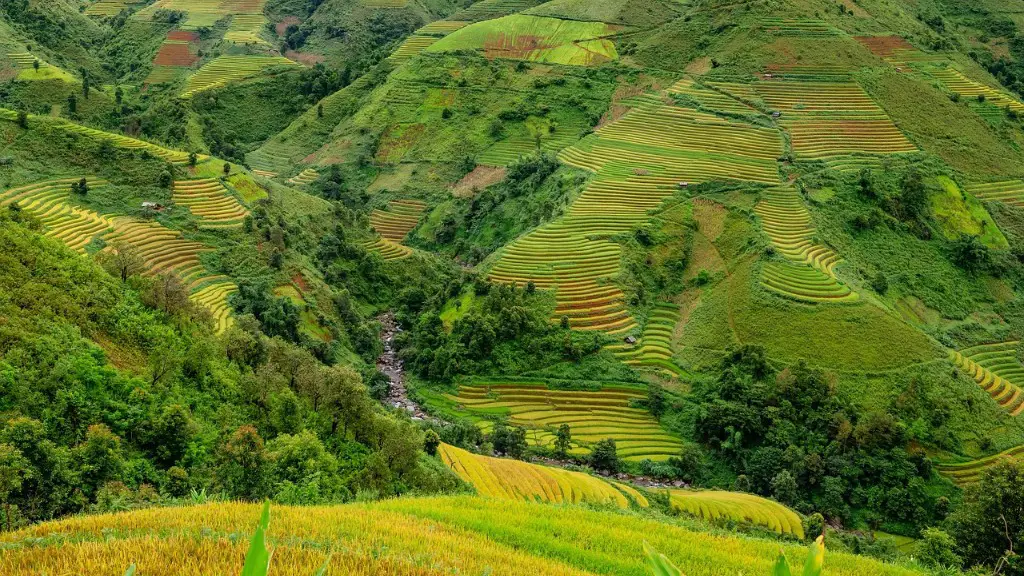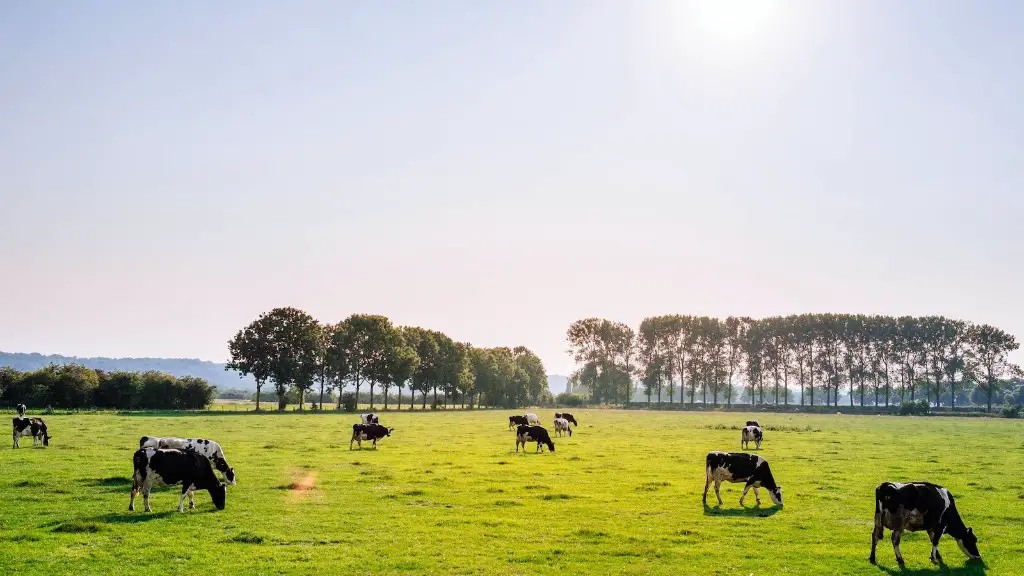Climate change is already having a negative impact on agriculture around the world. As temperatures rise and weather patterns become more erratic, crops are being damaged or destroyed, harvests are becoming poorer, and farmers are struggling to adapt. The effects of climate change on agriculture are likely to become even more severe in the coming years, with devastating consequences for food security.
Climate change has several negative effects on agriculture. One is that it increases the chance of extreme weather events, such as droughts, heat waves, and flooding. This can lead to lower crop yields, as well as losses in livestock and poultry. Also, as temperatures rise, pests and diseases can spread more easily, further damaging crops and livestock. Another issue is that as sea levels rise, saltwater can contaminate freshwater resources used for irrigation. This can make the land less productive and cause long-term damage.
What are some examples of climate change affecting agriculture?
Climate change is already having an impact on agriculture and food production around the world. As temperatures rise and weather patterns become more unpredictable, farmers and ranchers are struggling to keep up. Here are just a few ways climate change is affecting agriculture:
1. Soil erosion: Heavy rainfalls can lead to more soil erosion, which is a major environmental threat to sustainable crop production.
2. Drought: Longer, hotter droughts are becoming more common, making it difficult for crops and livestock to survive.
3. Wildfires: Large wildfires are becoming more common in some areas, destroying crops and grazing land.
4. Decreased crop yields: As conditions become more challenging, crop yields are decreasing, which could lead to food shortages in the future.
5. Heat stress: Heat waves are becoming more common and intense, stressing crops and livestock and making it difficult for farmers to work.
These are just a few of the ways climate change is impacting agriculture. As the situation continues to worsen, it is likely that we will see even more serious consequences.
This type of farming is not sustainable in the long run as it damages the environment and depletes natural resources. We need to move towards more sustainable, organic methods of farming that are better for the planet and our health.
What are the 5 negative effects of climate change
The Earth is going through some major changes and it’s affecting everything on it, including the animals. More frequent and intense drought, storms, heat waves, rising sea levels, melting glaciers and warming oceans can directly harm animals, destroy the places they live, and wreak havoc on people’s livelihoods and communities. We need to do something to help them, and fast.
Agriculture is the leading source of pollution in many countries. Pesticides, fertilizers and other toxic farm chemicals can poison fresh water, marine ecosystems, air and soil. They also can remain in the environment for generations.
Does climate change destroy agriculture?
Agricultural production in NSW is set to be affected by climate change in a number of ways. For example, changing conditions may make new areas suitable for farming, while also attracting new pests and diseases. This could have a major impact on the state’s agricultural industry, and steps will need to be taken to mitigate these effects.
Climate change is already impacting farmers in a number of ways, from more extreme weather events to changes in average temperatures and precipitation. These impacts are expected to continue and intensify in the coming years, making it increasingly difficult for farmers to produce the food we need.
We’re already seeing an increase in flooding in many agricultural regions of the country, including the Midwest, the Southern Plains, and California. Sea level rise is also ratcheting up the frequency and intensity of flooding on farms in coastal regions.
With more extreme weather and changes in climate patterns, farmers are facing new challenges that they haven’t had to deal with in the past. They’ll need to adapt their practices and find new ways to protect their crops and livestock from the effects of climate change.
What are the five main environmental impacts of agriculture?
Environmental effects of agriculture are a big concern. There are many factors that contribute to these effects, such as the type of farming, the location, and the climate. Some of the five main environmental effects of agriculture are soil fertility loss, eutrophication of water bodies, deforestation, climate change and pesticide pollution.
Soil fertility loss is caused by many different farming practices. One is simply the overuse of land. When a farmer plants the same crop in the same field year after year, the nutrients in the soil are depleted, and the fertility of the land decreases. Another way that fertility is lost is through soil erosion, which is when the topsoil is washed away by rain or wind. This leaves the land less able to support plant growth. Deforestation is also a big problem. Trees are cut down to make way for farmland, and this can lead to soil erosion and a loss of habitat for animals.
Eutrophication is the build-up of nutrient-rich materials in water bodies. This can be caused by runoff from farmland, where fertilizers and other chemicals pollute the water. It can also be caused by sewage and animal waste. This build-up of nutrients can lead to the growth of harmful algae, which
Farmers and livestock producers are facing three major issues: agricultural trade, tax reform and the new farm bill. There is uncertainty over how these issues will impact the industry, and farmers are closely watching to see what happens.
What are 5 environmental factors that affect the agriculture industry
There are many environmental factors that influence the amount of arable land available for crops. The main factors are terrain, climate, soil properties, and soil water.
Crops need space to grow, and must have sufficient light, warmth, and moisture. Soils must be of sufficient depth, and have adequate drainage, texture, and chemical and fertility properties.
The specific combination of these environmental factors will determine the amount of land available for crops, and how successful they will be.
Climate change can have a big impact on food crops. Soil temperature and moisture levels can change, which can affect the vitality of both beneficial organisms and pests. This can make it hard to grow crops, and can also lead to higher food prices.
What are the 3 negative effects of climate change?
The potential future effects of global climate change are concerning. More frequent wildfires, longer periods of drought in some regions, and an increase in the duration and intensity of tropical storms could all occur as a result of climate change. This would lead to devastating consequences for the environment and human populations. We must do everything we can to prevent further climate change and mitigate its effects.
There are a number of consequences of climate change that will create hardship for humans. These include extreme weather, diminishing sea ice, year after year of record-breaking warmth, drought, and fires. We are already seeing the effects of these things in many parts of the world, and it is only going to get worse as the climate changes further. We need to take action to mitigate and adapt to the changing climate, or we will face even more serious consequences in the future.
What is the biggest problems in agriculture
The world is changing, and with it our climate, our taste buds and our demands for food. To meet these ever-evolving challenges, farmers must be adaptable and invest in farm productivity. But that’s not all. They must also contend with climate change, soil erosion and biodiversity loss.
Fortunately, there are steps that farmers can take to mitigate the impact of these problems. For example, they can implement practices that help to prevent soil erosion, such as crop rotation and no-tillage farming. They can also take measures to conserve biodiversity, such as creating wildlife habitat. And, of course, they can continue to find ways to increase crop yields and satisfy the ever-changing tastes of consumers.
In short, it’s a tall order for farmers, but one that is essential for feeding the world in the years to come.
The loss of agricultural land and the decrease in the varieties of crops and livestock produced are two of the most major problems in agriculture. Agricultural land is being lost to development and other uses at an alarming rate, and the variety of crops and livestock being produced is decreasing as a result. This is a major problem because it threatens the food supply and the livelihoods of those who depend on agriculture. We need to find ways to stop the loss of agricultural land and increase the variety of crops and livestock being produced in order to ensure a secure food supply and vibrant agricultural sector.
What is the most common problem in agriculture?
These are only some of the many problems that farmers in India face on a regular basis. In addition to these, the country’s agriculture highly depends on rain-fed, which makes it even more difficult for farmers to produce a consistent yield. All of these factors combine to make farming a very difficult and challenging occupation in India.
There are a number of ways that climate change can affect agriculture. Beyond a certain range of temperatures, warming can reduce crop yields because plants speed through their development, producing less grain in the process. Higher temperatures can also interfere with the plant’s ability to get and use moisture, which can lead to lower yields. In addition, climate change can cause various pests and diseases to become more prevalent, which can also lead to reduced crop yields.
Conclusion
Climate change negatively affects agriculture in a number of ways. Extreme weather events becoming more frequent and intense, shifting rain patterns, and increases in average temperatures can all disrupt crop production and lead to lower yields. Less food production can lead to higher food prices and hunger. Additionally, climate change can damage agricultural infrastructure and lead to the spread of pests and diseases.
There are many potential negative effects of climate change on agriculture. These include changes in precipitation patterns, increased temperature extremes, and more extreme weather events. These changes could lead to reduced crop yields, decreased soil moisture, and increased pests and diseases. Additionally, climate change could lead to changes in water availability, both in terms of quantity and quality. These changes could have a serious impact on agricultural production, and could lead to increased food prices and food insecurity.





